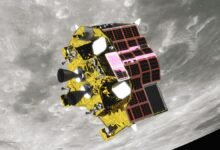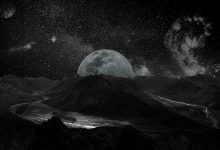Planetary scientists discover signs of solar-driven changes on Moon

Asteroid strikes with solar radiation affect the Moon in unique ways because it lacks the protective magnetic field as well as atmosphere that shields us here on Earth
NEW DELHI — On the Moon, tiny iron nanoparticles unlike those found on Earth are almost everywhere, and scientists are attempting to figure out why.
Northern Arizona University (NAU) scientists performed a recent research that discovered crucial hints to better comprehend the unexpectedly dynamic lunar surface.
Christian J. Tai Udovicic, Northern Arizona University doctoral candidate, along with associate professor Christopher Edwards, both of NAU’s Department of Astronomy and Planetary Science, recently published an article in Geophysical Research Letters, a peer-reviewed journal, that found that solar radiation may be a more important source of lunar iron nanoparticles than previously thought.
Because the Moon lacks the protective magnetic field and atmosphere that protects us here on Earth, asteroid strikes and solar radiation damage it in unique ways.
JAXA spacecraft data used to study nanoparticles on Moon
Asteroids and solar radiation both break down lunar rocks and soil, resulting in iron nanoparticles (some smaller, some bigger) that may be detected by equipment aboard Moon-orbiting satellites.
The researchers utilized data from NASA and the Japan Aerospace Exploration Agency (JAXA) spacecraft to figure out how rapidly iron nanoparticles develop on the Moon over time.
The role of Sun is prominent
Surprisingly, the smaller iron nanoparticles seemed to form at a comparable pace as radiation damage in samples returned from Apollo missions to the planet, indicating that the Sun plays a significant role in their creation.
Understanding the solar radiation environment and potential resources on the Moon are essential as NASA prepares to put the first woman and the next man on the planet by 2024 as part of the Artemis mission.
Researcher Tai Udovicic to broaden study of Moon
Tai Udovicic plans to broaden his targeted study to the entire Moon in the future, thanks to a NASA Future Investigators in Space Science and Technology (FINESST) grant, but he’s also excited to look closer at mysterious lunar swirls, one of which was previously selected as a landing site for the upcoming Lunar Vertex rover.
In order to educate future expeditions, Udovicic also analyses lunar temperatures and water ice stability.

